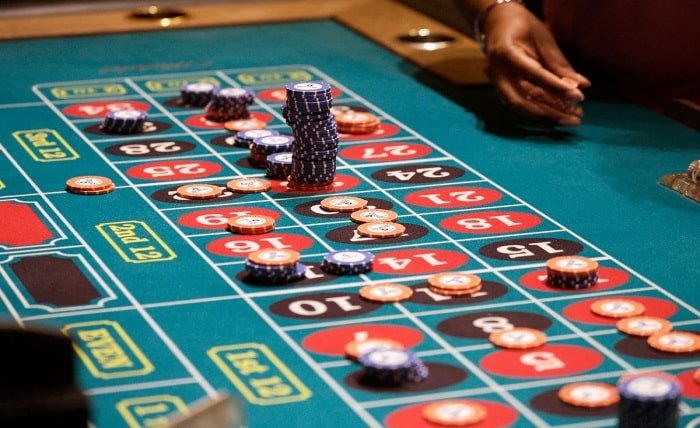What’s The Best Strategy For Determining How Many Spins To Give A Game?

Knowing Game Frequency And Variability Patterns
The type of the game itself should be one of the first factors taken into account while determining the number of spins to offer a digital game. Every game has its own rhythm; some give regular but meager prizes while others pay more at less regular intervals. Knowing these fundamental ideas will enable you to more fairly project the number of spins that would be worth committing time for.
For instance, players may discover that longer sessions with more spins improve the possibility of obtaining several results if a game usually provides regular minor prizes. On the other hand, a slot gacor game with rare but greater payouts could inspire a more conservative approach with less spins since the frequency of outcomes could be more dispersed.
Look for in-game details or play free versions to learn about the game you’re playing and see how it runs across time. This study facilitates understanding of the game’s flow, which can guide your choice of spin count for every given session.
Establishing Restraints Based On Individual Choice
Although knowing game patterns is important, personal taste is another main determinant of the number of spins to offer a digital game. Do you like quicker, high-stakes thrills or are you the kind of player that enjoys extended, drawn-out sessions where you absorb the experience?
One of the best ways is to establish a personal limit depending on your comfort degree. You might find, for example, that 100 spins every session provide a good mix of thrill and time. If you are more interested in short entertainment, though, you may restrict your spins to 50 or even 30 to make sure your session stays inside your chosen schedule.
Calculating your ideal game time is one way to get at this. You may quickly adjust limitations to fit your tastes knowing how long you enjoy playing and roughly how many spins you get in during that period. This guarantees that your session stays fun and doesn’t turn into a boring or frustrating one.
Run Your Session Using Spin Intervals
Intervals allow you another excellent approach to control your spin count in a session. Think about establishing smaller, more reasonable goals rather than deciding to do a lot all at once. If you are scheduling a longer session, for example, split it into 20 or 30 spin intervals and then stop to evaluate your development and experience.
Taking breaks not only helps with time management but also provides chances to modify your approach depending on the performance of the game. Are the game’s tempo slower than expected or do you see regular results? Should this be the case, you might choose to prolong your session or change the amount of spins you commit for the remaining game.
Intervals also allow you a mental reset, therefore avoiding burnout or tiredness brought on by extended gameplay. Examining your development at these stops helps you decide whether to keep on with one activity or move to another.
Spin Count: Risk Tolerance
Your degree of risk tolerance will obviously play a major part in determining how many spins to award a game. Those who appreciate more risk could want to select a higher spin limit, ready to welcome the unpredictability that accompanies lengthier sessions. If you would want more careful play, though, you may use a smaller spin count to guarantee that your game time stays within your comfort zone.
Managing risk mostly depends on understanding when to stop. Even although you could be tempted to keep spinning, you should clearly define the quantity of spins you are ready to do. This makes the game entertaining and helps avoid irritation when the results fall short of your expectations. Starting with a small number of spins and then progressively raising them only if the game is running properly or if you are enjoying the whole experience would be a good approach.
Examining Earlier Sessions
Looking back at past game sessions helps one adopt a more data-driven strategy and ascertain how often spins produce beneficial results. Monitoring your game sessions including spin counts, results, and playing time that allows you to see trends you would not have otherwise seen.
You might find, for example, that increasing your spin count beyond a given threshold had minimal effect on your results or that in earlier sessions a certain number of spins led to greater results. With time, this personal information might steer you toward a more exact approach and help shape next sessions.
This approach uses your particular playstyle and results to shape your decision-making process, therefore enabling a more customized strategy. This study can help you decide how many spins to give a game, whether your preferred method is to log thorough data or just consider your experience following every session.
Be Adaptive And Flexible
Maintaining flexibility is among the most crucial components of any plan. Even if you may enter a session knowing a certain spin count, occasionally the game will surprise you. Perhaps the results are not as expected and you want to stop the session short, or maybe you are so in love with it that you choose to extend your playing. The secret is to keep flexible and receptive to modifying your spin count depending on your experience.
This adaptation also entails changing your approach based on the game you are playing. Different games will have different patterns, hence your spin approach may have to change from game to game. Flexibility guarantees that you are constantly involved and enjoying the event instead of rigorously following a strategy that isn’t not producing the desired results or satisfaction.





